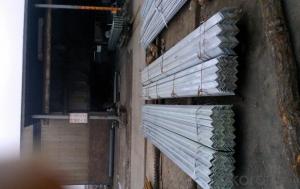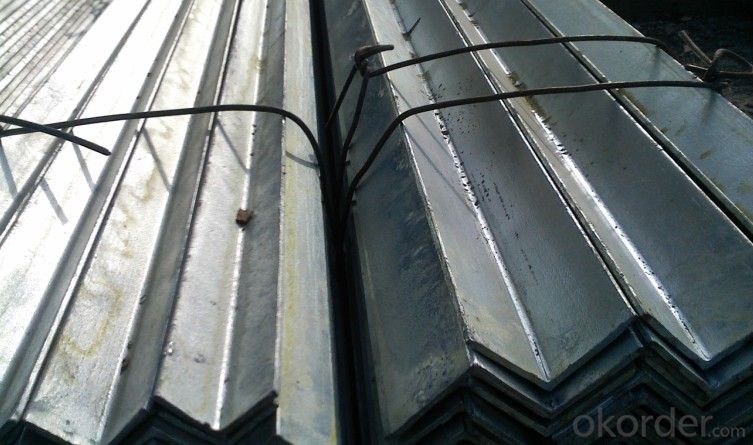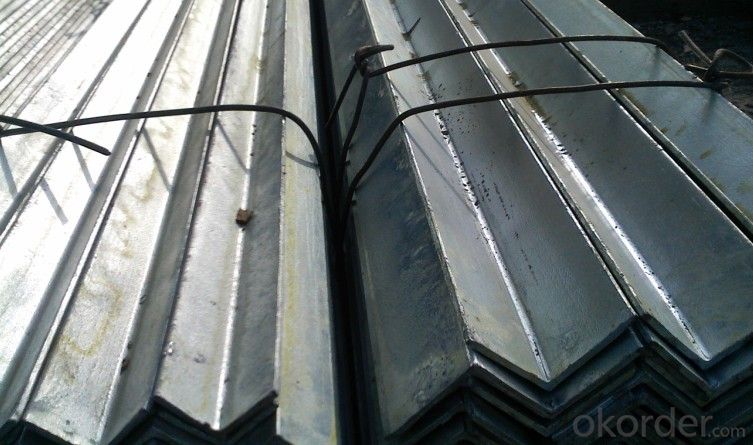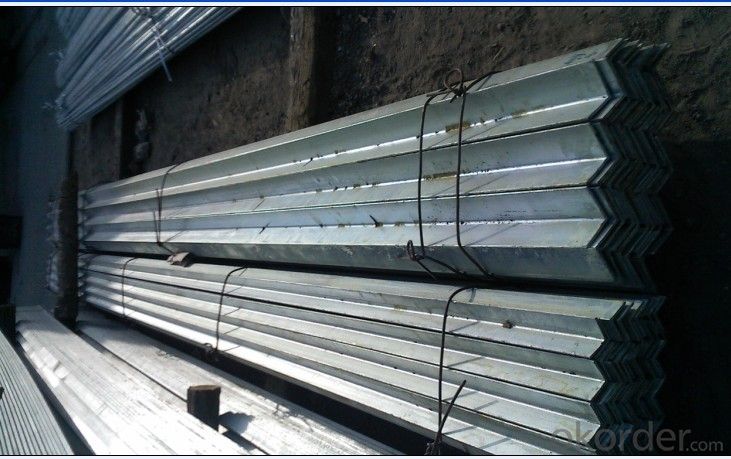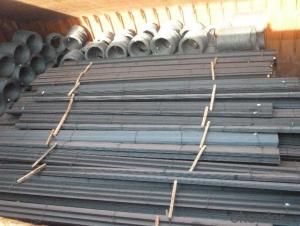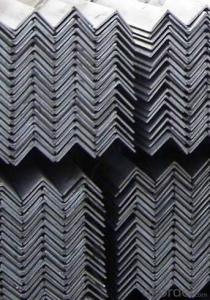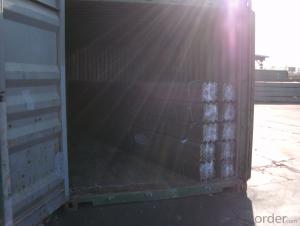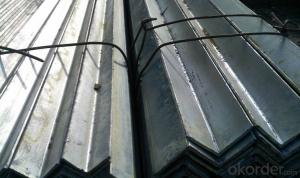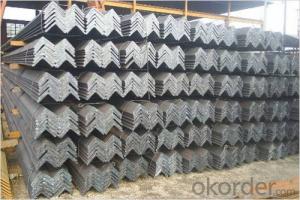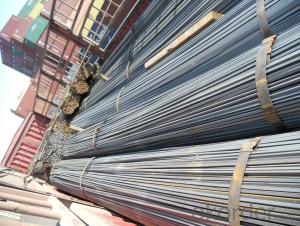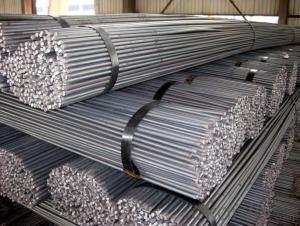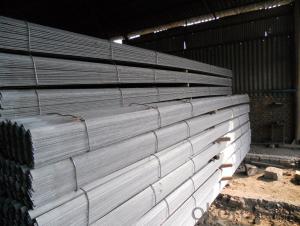Hot Rolled Equal Angle Bar Q235,SS400,A36,S235JR
- Loading Port:
- Tianjin
- Payment Terms:
- TT or LC
- Min Order Qty:
- 25 m.t.
- Supply Capability:
- 200000 m.t./month
OKorder Service Pledge
OKorder Financial Service
You Might Also Like
Product Description:
OKorder is offering Hot Rolled Equal Angle Bar Q235,SS400,A36,S235JR at great prices with worldwide shipping. Our supplier is a world-class manufacturer of steel, with our products utilized the world over. OKorder annually supplies products to African, South American and Asian markets. We provide quotations within 24 hours of receiving an inquiry and guarantee competitive prices.
Product Applications:
Hot Rolled Equal Angle Bar Q235,SS400,A36,S235JR are ideal for structural applications and are widely used in the construction of buildings and bridges, and the manufacturing, petrochemical, and transportation industries.
Product Advantages:
OKorder's Hot Rolled Equal Angle Bar Q235,SS400,A36,S235JR are durable, strong, and wide variety of sizes.
Main Product Features:
· Premium quality
· Prompt delivery & seaworthy packing (30 days after receiving deposit)
· Can be recycled and reused
· Mill test certification
· Professional Service
· Competitive pricing
Product Specifications:
Manufacture: Hot rolled
Grade: Q195 – 235
Certificates: ISO, SGS, BV, CIQ
Length: 6m – 12m, as per customer request
Packaging: Export packing, nude packing, bundled
| EQUAL ANGLE STEEL | |||||
| size(mm) | a(mm) | a1(mm) | thickness(mm) | kg/m | length |
| 50*50*4 | 50 | 50 | 4 | 3.059 | 6m,9m,12m |
| 50*50*5 | 50 | 50 | 5 | 3.77 | 6m,9m,12m |
| 50*50*6 | 50 | 50 | 6 | 4.465 | 6m,9m,12m |
| 63*63*5 | 63 | 63 | 5 | 4.822 | 6m,9m,12m |
| 63*63*6 | 63 | 63 | 6 | 5.721 | 6m,9m,12m |
| 65*65*5 | 65 | 65 | 5 | 5 | 6m,9m,12m |
| 65*65*6 | 65 | 65 | 6 | 5.91 | 6m,9m,12m |
| 65*65*8 | 65 | 65 | 8 | 7.66 | 6m,9m,12m |
| 75*75*5 | 75 | 75 | 5 | 5.818 | 6m,9m,12m |
| 75*75*6 | 75 | 75 | 6 | 6.905 | 6m,9m,12m |
| 75*75*8 | 75 | 75 | 8 | 9.03 | 6m,9m,12m |
| 75*75*9 | 75 | 75 | 9 | 9.96 | 6m,9m,12m |
| 75*75*10 | 75 | 75 | 10 | 11.089 | 6m,9m,12m |
| 80*80*6 | 80 | 80 | 6 | 7.375 | 6m,9m,12m |
| 80*80*7 | 80 | 80 | 7 | 8.525 | 6m,9m,12m |
| 80*80*8 | 80 | 80 | 8 | 9.658 | 6m,9m,12m |
| 80*80*10 | 80 | 80 | 10 | 11.874 | 6m,9m,12m |
| 90*90*6 | 90 | 90 | 6 | 8.35 | 6m,9m,12m |
| 90*90*7 | 90 | 90 | 7 | 9.656 | 6m,9m,12m |
| 90*90*8 | 90 | 90 | 8 | 10.946 | 6m,9m,12m |
| 90*90*10 | 90 | 90 | 10 | 13.476 | 6m,9m,12m |
| 100*100*6 | 100 | 100 | 6 | 9.366 | 6m,9m,12m |
| 100*100*7 | 100 | 100 | 7 | 10.83 | 6m,9m,12m |
| 100*100*8 | 100 | 100 | 8 | 12.276 | 6m,9m,12m |
| 100*100*9 | 100 | 100 | 9 | 13.49 | 6m,9m,12m |
| 100*100*10 | 100 | 100 | 10 | 15.12 | 6m,9m,12m |
| 100*100*12 | 100 | 100 | 12 | 17.898 | 6m,9m,12m |
| 120*120*8 | 120 | 120 | 8 | 14.88 | 6m,9m,12m |
| 120*120*10 | 120 | 120 | 10 | 18.37 | 6m,9m,12m |
| 120*120*12 | 120 | 120 | 12 | 21.66 | 6m,9m,12m |
| 125*125*8 | 125 | 125 | 8 | 15.504 | 6m,9m,12m |
| 125*125*10 | 125 | 125 | 10 | 19.133 | 6m,9m,12m |
| 125*125*12 | 125 | 125 | 12 | 22.696 | 6m,9m,12m |
| 130*130*10 | 130 | 130 | 10 | 19.8 | 6m,9m,12m |
| 130*130*12 | 130 | 130 | 12 | 23.6 | 6m,9m,12m |
| 130*130*13 | 130 | 130 | 13 | 25.4 | 6m,9m,12m |
| 130*130*14 | 130 | 130 | 14 | 27.2 | 6m,9m,12m |
| 150*150*10 | 150 | 150 | 10 | 23 | 6m,9m,12m |
| 150*150*12 | 150 | 150 | 12 | 27.3 | 6m,9m,12m |
| 150*150*14 | 150 | 150 | 14 | 31.6 | 6m,9m,12m |
| 150*150*15 | 150 | 150 | 15 | 33.8 | 6m,9m,12m |
| 140*140*10 | 140 | 140 | 10 | 21.49 | 6m,9m,12m |
| 140*140*12 | 140 | 140 | 12 | 25.52 | 6m,9m,12m |
| 140*140*14 | 140 | 140 | 14 | 29.49 | 6m,9m,12m |
| 160*160*10 | 160 | 160 | 10 | 24.73 | 6m,9m,12m |
| 160*160*12 | 160 | 160 | 12 | 29.39 | 6m,9m,12m |
| 160*160*14 | 160 | 160 | 14 | 33.99 | 6m,9m,12m |
| 180*180*12 | 180 | 180 | 12 | 33.16 | 6m,9m,12m |
| 180*180*14 | 180 | 180 | 14 | 39.39 | 6m,9m,12m |
| 180*180*16 | 180 | 180 | 16 | 43.45 | 6m,9m,12m |
| 180*180*18 | 180 | 180 | 18 | 48.63 | 6m,9m,12m |
| 200*200*14 | 200 | 200 | 14 | 42.89 | 6m,9m,12m |
| 200*200*16 | 200 | 200 | 16 | 48.68 | 6m,9m,12m |
| 200*200*18 | 200 | 200 | 18 | 54.4 | 6m,9m,12m |
| 200*200*20 | 200 | 200 | 20 | 60.06 | 6m,9m,12m |
| 200*200*24 | 200 | 200 | 24 | 71.17 | 6m,9m,12m |
Trademark | Rank | Chemical composition (quality score) % | |||||
C | Si | Mn | S | P | |||
≤ | ≤ | ≤ | |||||
Q235 | A | 0.14-0.22 | 0.30 | 0.30-0.65 | 0.050 | 0.045 | |
Q235 | B | 0.12-0.20 | 0.30 | 0.30-0.70 | 0.045 | 0.045 | |
Trademark | Rank | Pulling Test | |||||
Bend PointΔs/Mpa | Tensile Strength | Elongation Ratioδ5% | |||||
Thickness (Diameter) /MM | Thickness (Diameter) /MM | ||||||
≤16 | 16-40 | ≤16 | 16-40 | ||||
≥ | ≥ | ||||||
Q235 | A | 235 | 225 | 375-500 | 26 | 25 | |
Q235 | B | 235 | 225 | 375-500 | 26 | 25 | |
FAQ:
Q1: Why buy Materials & Equipment from OKorder.com?
A1: All products offered byOKorder.com are carefully selected from China's most reliable manufacturing enterprises. Through its ISO certifications, OKorder.com adheres to the highest standards and a commitment to supply chain safety and customer satisfaction.
Q2: How many tons of steel products could be loaded in containers?
A2: Usually the steel products are delivered by bulk vessel because of the large quantity and the freight. However, there are no bulk vessel enter some seaports so that we have to deliver the cargo by containers. The 6m steel product can be loaded in 20FT container, but the quantity is changed according to the size, usually from 18tons to 25tons.
Q3: How soon can we receive the product after purchase?
A3: Within three days of placing an order, we will arrange production. The normal sizes with the normal grade can be produced within one month. The specific shipping date is dependent upon international and government factors, the delivery to international main port about 45-60days.
Images:
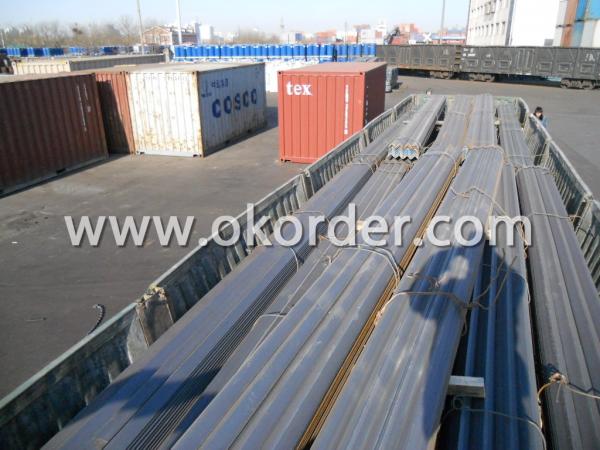
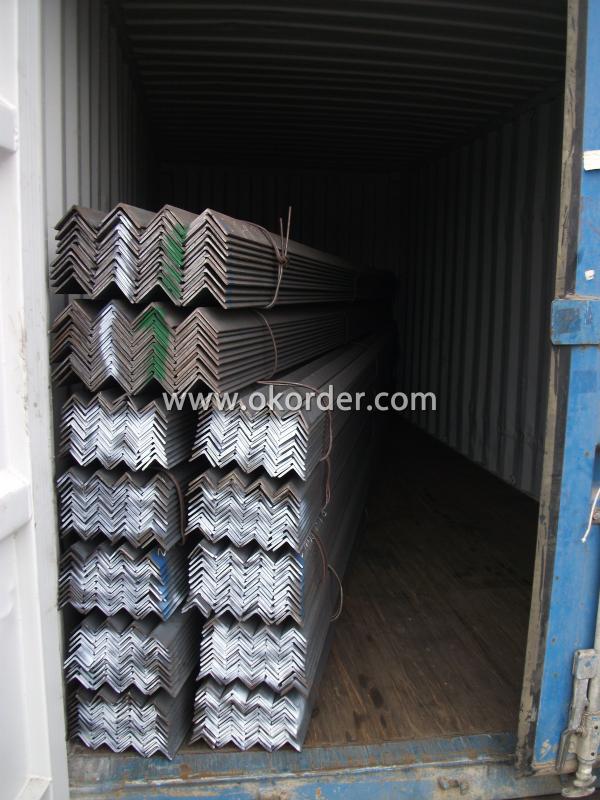
- Q: Can steel angles be used for reinforcing steel structures?
- Yes, steel angles can be used for reinforcing steel structures. Steel angles are versatile and widely used in construction projects for their strength and durability. They can be used as reinforcements to strengthen and provide additional support to steel structures such as beams, columns, and trusses. Steel angles are often used in conjunction with other reinforcing materials, such as steel bars or mesh, to enhance the overall structural integrity of the steel structure. The angle shape of the steel angles allows them to be easily welded or bolted into place, making them a popular choice for reinforcing steel structures. Additionally, steel angles come in various sizes and thicknesses, allowing for flexibility in design and application. Overall, steel angles are an effective and commonly used option for reinforcing steel structures.
- Q: What are the different types of steel angles used in agriculture?
- There are several different types of steel angles used in agriculture, each with its own unique purpose and function. One common type is the standard angle, which is typically used for general construction and support applications. These angles have a 90-degree bend and are often used to reinforce structures such as barns, fences, and gates. Another type is the corner angle, which is specifically designed for creating corners or joints in agricultural structures. These angles have equal legs and are typically used to provide additional strength and stability at the corners of buildings, enclosures, or equipment. Slotted angles are also commonly used in agriculture. These angles have pre-drilled holes along their length, allowing for easy attachment of various components such as shelves, brackets, or hooks. They are often used in storage areas or workshops to create custom shelving or storage solutions. Additionally, there are specialized steel angles used for specific agricultural applications. For example, rack angles are used to support and secure storage racks for hay or other agricultural products. Purlin angles are used to support roof structures or provide additional strength to roof trusses in agricultural buildings. Overall, the different types of steel angles used in agriculture serve various purposes, including structural support, reinforcement, joint creation, and customized storage solutions. The specific type of angle used will depend on the specific requirements and needs of the agricultural project or structure.
- Q: What are the different types of steel angles used in shelving units?
- There are typically two types of steel angles used in shelving units: equal angles and unequal angles. Equal angles have equal sides and are commonly used for standard shelving configurations. Unequal angles have one longer side and one shorter side, which allows for customized shelving arrangements to accommodate different storage needs.
- Q: How do steel angles perform in terms of electrical conductivity?
- Steel angles have low electrical conductivity due to the high resistance of steel to the flow of electric current.
- Q: Are steel angles suitable for rooftop installations?
- Indeed, rooftop installations can indeed benefit from the suitability of steel angles. Steel angles are frequently employed in construction endeavors due to their impressive strength and durability. Their capacity to furnish structural support and stability renders them especially advantageous for rooftop installations. Solar panels, HVAC units, communication antennas, and satellite dishes can all be effectively secured using steel angles. Furthermore, steel angles boast resistance against weathering, corrosion, and fire, thus solidifying their reputation as a dependable option for rooftop installations.
- Q: What is the typical thickness of the flanges of a steel angle?
- The typical thickness of the flanges of a steel angle can vary depending on the specific application and industry standards. However, in general, the flanges of a steel angle are commonly found in thicknesses ranging from 1/8 inch to 3/4 inch. It is important to note that thicker flanges provide increased strength and stability, but also add to the weight and cost of the steel angle. The appropriate thickness of the flanges should be determined based on the specific requirements of the project and any applicable engineering or design standards.
- Q: Can steel angles be used in window frames?
- Yes, steel angles can be used in window frames. Steel angles are commonly used in construction and can provide structural support and stability to window frames. They are often used as reinforcements or brackets to connect the window frame to the wall or to other components of the window system. Steel angles are durable, strong, and resistant to corrosion, making them a suitable choice for window frame construction. Additionally, steel angles can be easily customized and fabricated to fit different window sizes and designs.
- Q: What are the different methods of impact testing for steel angles?
- There are several methods of impact testing that can be used to assess the toughness and resistance of steel angles. These methods include the Charpy V-notch test, the Izod test, and the drop weight test. 1. Charpy V-notch Test: This is one of the most commonly used methods for impact testing. In this test, a notched specimen of the steel angle is placed in a pendulum hammer. The hammer is released, swinging down and striking the specimen. The amount of energy absorbed by the specimen before it fractures is measured and used to determine the impact toughness of the material. 2. Izod Test: Similar to the Charpy V-notch test, the Izod test involves using a pendulum hammer to strike a notched specimen of the steel angle. However, in this test, the specimen is clamped vertically, while the hammer strikes it horizontally. The energy absorbed by the specimen is measured and used to evaluate its impact resistance. 3. Drop Weight Test: This method involves dropping a weight onto a specimen of the steel angle from a certain height. The specimen is usually supported on a solid base, and the impact energy is calculated based on the weight and the height of the drop. The deformation and fracture behavior of the specimen are then analyzed to determine its impact toughness. These different methods of impact testing help engineers and manufacturers assess the ability of steel angles to withstand sudden impact or shock loads. By evaluating the toughness and resistance of the material, these tests provide valuable information for designing structures and selecting appropriate materials for various applications.
- Q: What is the standard size of steel angles?
- Steel angles come in a range of sizes that vary depending on the region and industry standards. Generally, they are available in equal and unequal leg lengths, with the equal leg angles typically sized between 20mm and 200mm. The thickness of the angle can also vary, typically falling between 3mm and 20mm. However, it is crucial to understand that these measurements may differ based on the specific application or project requirements. To determine the correct size of steel angles for a particular project, it is recommended to consult industry standards or manufacturers.
- Q: Are steel angles resistant to vibrations?
- Yes, steel angles are generally resistant to vibrations due to their rigid and sturdy structure. The inherent strength and stability of steel make it a suitable material for withstanding vibrations caused by various sources.
Send your message to us
Hot Rolled Equal Angle Bar Q235,SS400,A36,S235JR
- Loading Port:
- Tianjin
- Payment Terms:
- TT or LC
- Min Order Qty:
- 25 m.t.
- Supply Capability:
- 200000 m.t./month
OKorder Service Pledge
OKorder Financial Service
Similar products
Hot products
Hot Searches
Related keywords
